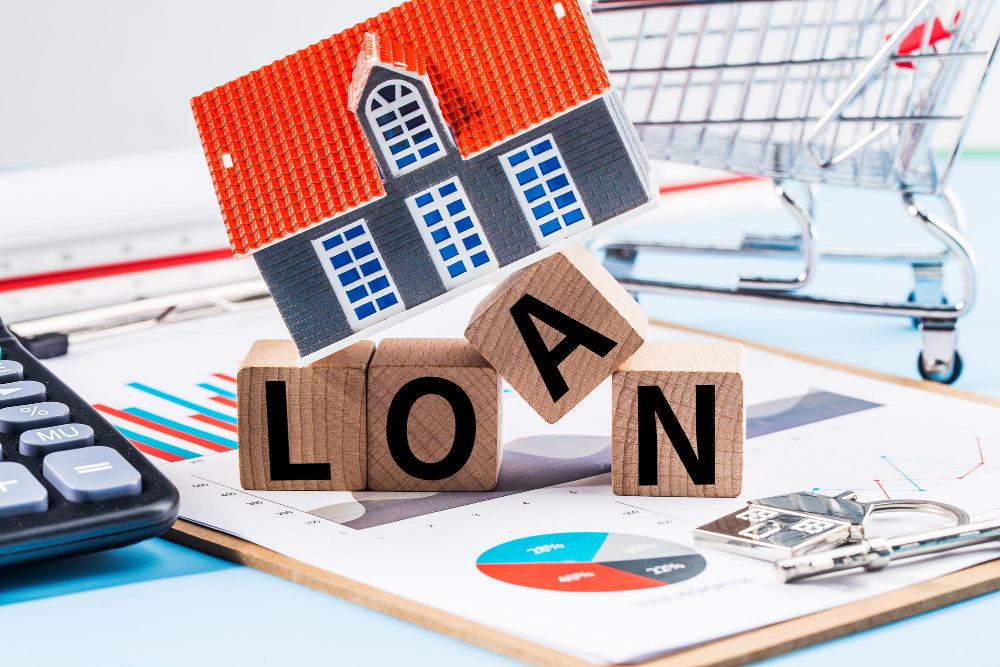Numerous loan programs exist for anyone looking to purchase a home needing repair. The steps necessary to finish renovations to your home may change based on the type of financing you are able to secure. The following are examples of widely used lending programs for house improvements:
The Fannie Mae HomeStyle loan is a one-time financing option considering the price of necessary home improvements. Both structural and cosmetic repairs are eligible for funding through this loan, as are improvements the homeowner wants to make.

Borrowers prefer this type of loan since they will only need to make one monthly loan payment, and the combined purchase price and repair costs will be eligible for lower interest rates. With adjustable interest rates, mortgage terms of 15 or 30 years are available. Once all repairs have been made, the home’s estimated worth will determine your final loan amount on a Homestyle mortgage. Buyers with excellent credit and access to low-interest rates should strongly consider Fannie Mae’s Homestyle program.
The FHA 203(k) loan is a government-backed alternative to the Homestyle loan, allowing applicants with weaker credit scores to qualify. Due to the higher mortgage insurance costs associated with an FHA loan, this choice is typically the more expensive of the two. The origination charge for these mortgages is rolled into the loan’s principal amount.
A complete or simplified FHA 203(k) loan may be essential, depending on the state of your house.
FHA 203(k) Full Loans are for primary residences requiring extensive renovations, whereas Streamline Refinance Loans are for homes requiring repairs of $35,000 or less.
Non-structural home improvements that increase the value of a property can be financed using an EZ “Conventional loan, which is compatible with traditional mortgages. It includes repairs mandated by the appraiser and those chosen by the borrower.
Another option is applying for a jumbo renovation loan for properties that cost more than the EZ “C” conventional can cover. A jumbo renovation loan can be used for mandatory repairs mandated by an appraiser and optional repairs desired by the borrower. All repairs must be cosmetic and increase the value of the property.
Home repair loans from the USDA’s Rural Development program can help ensure that people in rural areas can access affordable, habitable dwellings. New appliances, foundations, siding, roofing, windows, plumbing, electricity, and other renovations are all eligible for funding under this program. To qualify for the program, participants must live in a rural area with a meagre income.
There are other options than taking out a loan to pay for home improvements if you don’t have cash. Home equity loans and lines of credit (HELOCs) are another option, and they tend to have lower interest rates and fees than personal loans. If your credit could be better, but you have some equity in your house, this may be your best option. In contrast to home equity lines of credit, the interest rate on home equity loans is fixed at the time of the loan’s creation.
When Should You Consider Getting a Loan to Pay for Home Renovations?
Obtaining a loan to fund a home Renovation project is only a good idea if doing so will result in long-term cost savings. Depending on the project, you can enhance your home’s worth by more than the cost of the modifications. The most cost-effective renovations are to the attic, basement, bathroom, and front entrance. Ensure you invest in the right areas to increase your home’s resale price.
If a repair will reduce your monthly expenses or make your home safer, it may be wise to investigate home improvement loans. Roof maintenance, siding replacement, and window replacement are all examples of these projects.
Educating yourself on the potential pitfalls of a home improvement loan is crucial. Determine your equity first. When you have less money in your home, you tend to default on a renovation loan.
Overspending on the renovation project is another standard error. You want the upgrades only to drive up the price of your home a little about others in the area. You should know the upper range of home sale prices in your neighbourhood so you don’t hurt your property’s marketability by asking too much.
Finally, take your time when renovating. It’s a great idea to talk to multiple lenders to compare rates and keep in mind that it’s not uncommon for renovations to cost more and take longer than expected. Before taking on another mortgage, you should make sure your budget can manage it.
Loan Options Other Than Home Equity
If you plan on doing a more minor, less expensive remodelling and have excellent credit, you may get by with a credit card with a particular no-interest term. It’s easier to keep track of project costs when charged to a dedicated credit card, and borrowing fees can be kept to a minimum with a 0% APR deal. Because it’s so simple to slip into debt when using a credit card, it’s best to get one if you know you can use it responsibly and pay off the balance quickly.
With a cash-out refinance, you can obtain a new loan for more than you owe on your house and put the extra money on renovations. This may be your best option if you have a high credit score, low-interest rate alternatives, and 20% equity or more in your house. Before deciding to refinance, you should carefully consider the rates, lenders, and amount of equity you have in your home.
The optimal decision for you will be highly context-dependent. A home improvement loan makes the most sense if you want to renovate your new house immediately because of its cheaper rates and closing expenses. The value of your property can rise with the help of a home equity loan if you have previously established some equity. Refinancing to withdraw cash or creating a credit line are both practical alternatives when rates are low, and credit is excellent.



